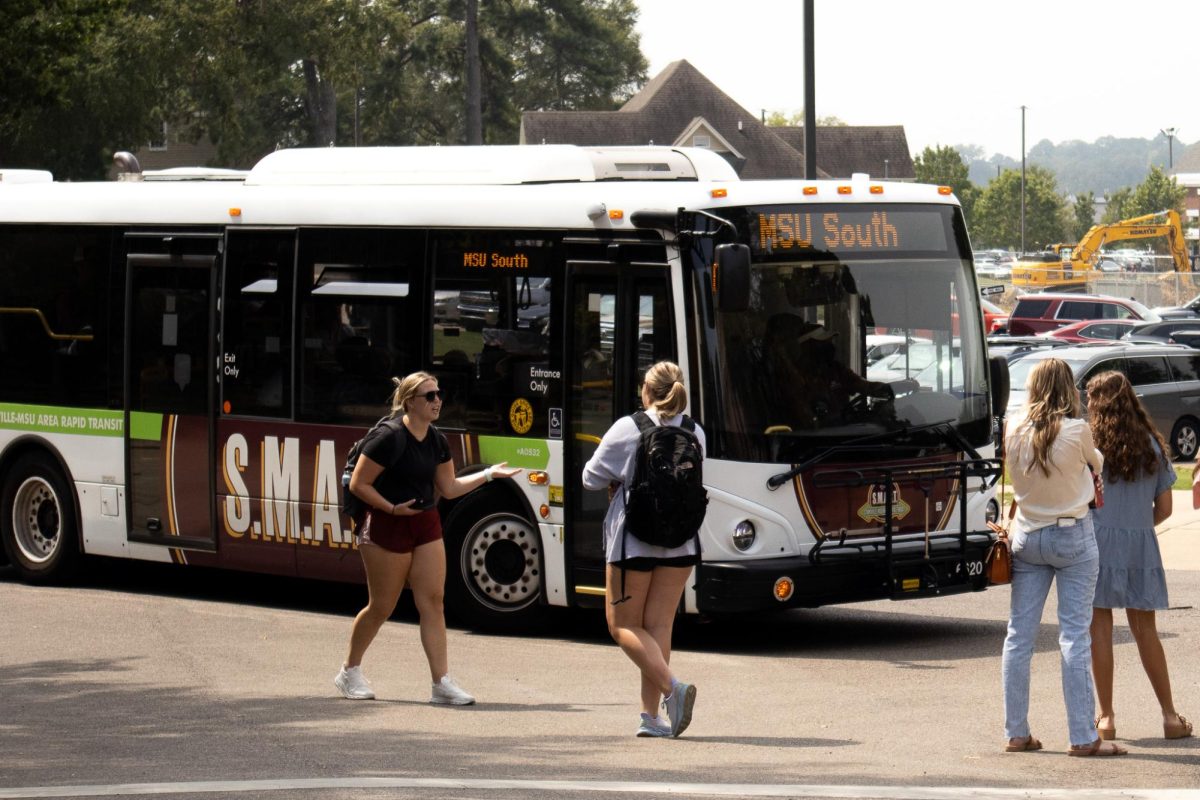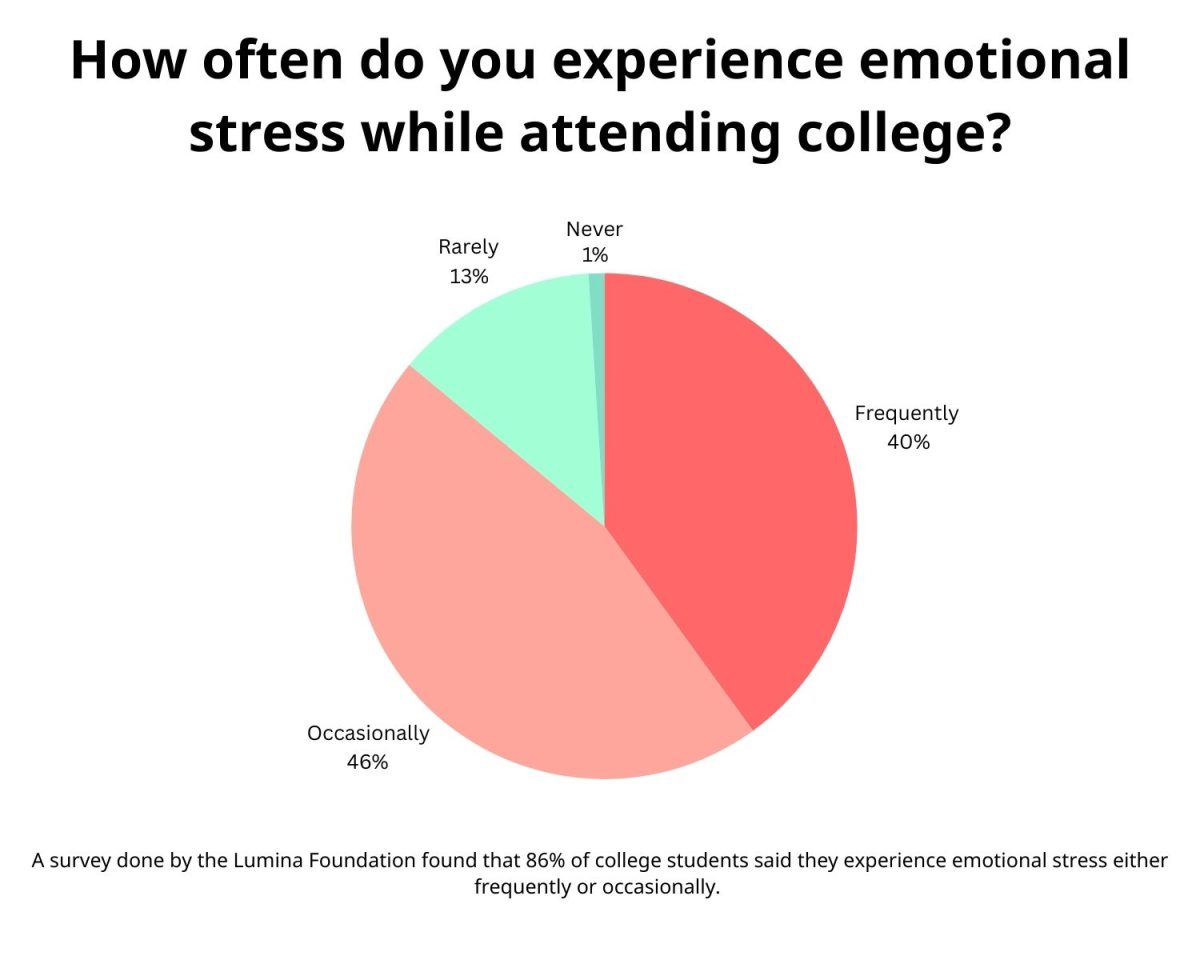With Mississippi State University’s student population growing each year, available transportation options are an increasingly important issue. The simplest form of transportation for those on campus is walking, but for those who live off-campus or have a disability, this is not the most viable option. The MSU bus system, known as the S.M.A.R.T buses, attempts to solve this issue. However, it falls short in many ways.
As many may know, the parking lots on campus tend to have little to no availability in convenient areas. Those living on campus with a car must pay for a $250 parking permit. But, because they live on campus, driving to and from class is not necessary.
According to the MSU Department of Transportation website, a parking permit for commuter students averages $200. For those who cannot afford it, the S.M.A.R.T buses sometimes become the best available option—but they are inherently flawed, especially for those living off-campus.
Students can track the status of the buses nearest to them on an app called TransLoc. On this app, you find the bus stop nearest to you, and from there, you can see the times the bus is on track to arrive at said stop. At the Starkville apartment complexes with access to the MSU bus system, students still have to plan ahead to make it to their bus stop on time and account for the fact that the buses are liable to arrive early or late, depending on the day, often straying from their scheduled pick-up times.
In my experience, the buses tend to update their times without notification, making their estimated arrival sometimes up to twenty minutes earlier than scheduled. Because you do not receive a notification for this, it is not rare for the bus to end up coming to a stop earlier than expected and leaving. This would not be a big issue if the city buses were more frequent, but on some routes, if you miss the bus, there will not be another one for almost an hour.
Claiborne Whitfield, a sophomore business major, takes the buses to campus as his main form of transportation.
“I often take the bus to school and back,” Whitfield said. “Sometimes I walk because the bus is not always on time. That’s hard to deal with when you’re trying to make classes. I live 30 minutes off campus, so the bus ride is vital to me.”
Whitfield lives in the Social Block and Townhomes, which is an estimated 32-minute walk away from campus. Whitfield also commented on the app used to track the buses, TransLoc.
“They should follow the schedule posted on the app,” Whitfield said. “It gets confusing. It only shows one estimation at a time, and that leads to missing the bus and missing class.”
Students who live on campus also use the buses to get around. On-campus routes include central, north, south and east MSU. These buses are much more frequent but are also under an even more frequent schedule. Although the wait time between buses is shorter, the campus buses are often tightly packed and leave much quicker than the city buses. For students attempting to shorten a long walk to class, missing these buses is easy and can often cause them to be late.
While the bus system is generally an efficient way to get around campus, improvements must be made to better serve those who depend on it.
City buses often do not stay stopped for any longer than a couple of seconds, then later, they pull over at another stop and stay stopped for up to 10 minutes at a time to ensure they are still on campus by their estimated arrival time. Instead of doing this, buses should stay stopped at each individual stop for two to three minutes, allowing them to meet their arrival time but spread out the stops more. Spending just a little more time at each stop rather than 10 minutes at one stop keeps people from being left behind but also ensures they are still where they need to be on time.
Another change that could make MSU’s bus system more efficient for everyone would be reducing bus stops and increasing the number of buses. Some bus stops are currently in very quick succession of each other. These stops in the same area could simply be turned into one, allowing more buses to rotate, especially in the city area. This would also help the campus buses with their capacity issues.
Whether you live on or off campus, need accessible transportation to get around or just want to avoid the long walks, the MSU-Starkville area S.M.A.R.T buses are a good option as they are now. However, with a few adjustments to their protocol, timing and placement, they could easily become a more efficient way for those who need them to get around campus and the Starkville area.







